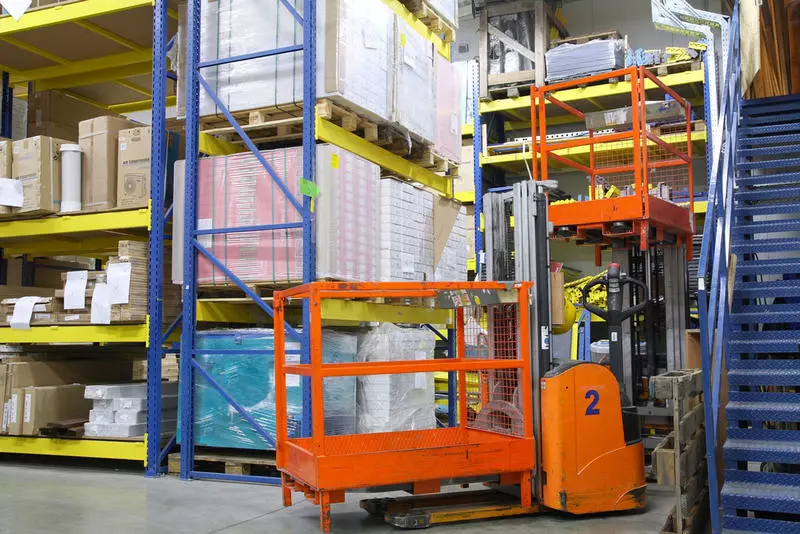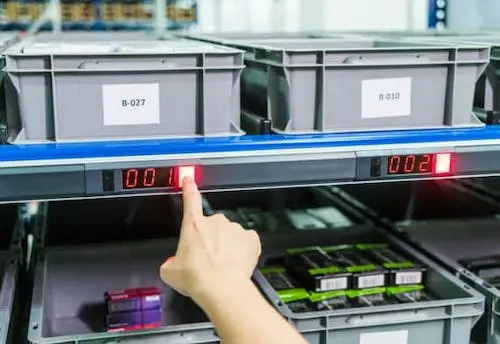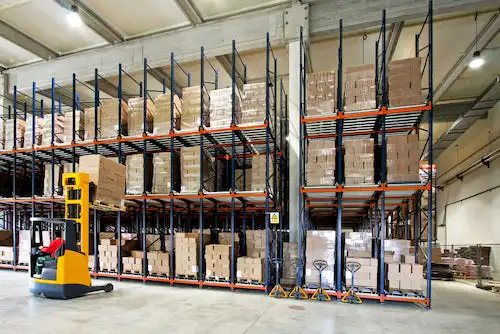How do you meet your customer’s expectations? How do you take advantage of your warehouse’s operations, and distribution, and mitigate its ever-increasing footprint? How do you alleviate the strain of tedious tasks on your workforce? In this article, we’re going to discuss case-picking — what it is, the types you have to deal with, and the challenges of it. We’ll also give you a few tips on how to optimize this process with technology and key warehouse case-picking strategies.
What is case picking in a warehouse?
Case picking in warehouses is the process of choosing items in a warehouse, typically from a list. It’s one of the most essential branches of order fulfillment. In warehouse case picking, an item is selected, grabbed, and “picked” either in full-case or carton quantities from a multitude of storage mediums — carton floss, racks, shelving, pallets, etc.
The process generally begins – in a well-managed warehouse with WMS programming, one that has evolved from pen and paper – by scanning the barcode of an item to determine the location. Picker then locates the item and selects it for packing. Case picking is a tedious job and can be difficult for workers with dexterity or mobility problems. However, it’s a necessary evil in most warehouses.
The role of case picking in the warehouse’s processes chain is to select and assemble orders from different batches according to their product ID and quantity.
To achieve successful warehouse management, the case-picking process is an important factor. The right method of picking cases of goods can improve the efficiency and accuracy of the whole process.

Case picking is extremely common in most warehouse and distribution centers – particularly those that specialize in retail, eCommerce, or online stores. In a way, case picking is distribution synthesized to its most essential processes.
- An order comes in.
- Someone finds the product from said order.
- The product is picked.
- The picker delivers the product to packing.
From big-box store suppliers, all the way to the pharmaceutical industry, many industries devote a significant amount of their warehouse process to case picking.
Types of warehouse case picking
There are two types of case picking: full-case picking and split-case. Let’s look at what each entails, and their differences.
What is full case picking?
Full case picking is a warehouse management process that involves the picking of an entire case of product from a shelf. It is the most efficient way to pick items from a warehouse because it minimizes the time required to travel back and forth between shelves. It is done by someone who is trained to do the job and has the necessary skills. In this process, the picker will have to carry a lot of inventory with them at all times.
This type of case picking values quantity — it’s mostly used in distribution centers, or for clients that like to buy in bulk. It’s the go-to methodology for the food and beverage industry.
Split case picking
Split-case order picking system is a technique for picking items from a case. The items are divided into two groups and the picker selects one item from each group. The technique can be used to speed up the process of picking items from a case or to reduce the number of selections required to pick an item. This method is cost-effective because it uses less labor than full-case picking, but it also takes longer to complete because there are more steps involved in this process.
This process is mostly used for small items or individual items. The method is oftentimes called each pick or single picking. It’s extremely important in eCommerce and retail when customers buy single case items instead of bulk.
How to improve your warehouse case picking?
Performance, speed, and efficiency equals profits — that’s a fact. Picking operations account for over 55% of a warehouse’s overall monthly expenses. An inefficient system, one that lacks today’s modern innovations, not to mention top-tier picking strategies can put warehouses in the red when it comes to their bottom line.

Improving case picking, for many managers, is a top priority, and closing the right tech is key to that objective.
Let’s look at some tools managers can incorporate when it comes to warehouse case picking.
Hand-held RF Picking
Hand-held RF picking is the process of scanning and picking items from a container using a handheld device. The handheld device typically has an RF scanner, an antenna, and a display screen. The handheld device can be connected to the container through either Bluetooth or Wi-Fi. The connection enables the device to identify and track each item in the container as it is scanned by the antenna.
Voice picking
Voice picking is a system that uses voice recognition to identify the product that is being spoken about. This technology has been implemented in many warehouses and distribution centers. It helps reduce the time it takes for workers to find products, which can be especially helpful in large warehouses. In some cases, voice picking systems are used in conjunction with barcode scanning to give workers more accurate information about what they are picking from the warehouse shelve.
Hand’s free scanning tech
The traditional way to scan something was to stand in front of a scanner and put the item on the scanner bed, but now there is a new hands-free scanning technology that can change how people scan items. This new scanning technology is called Hands-Free Scanning Technology and it works by using sensors to detect when an object is placed on the scanning platform. It also has software that allows users to identify what they want scanned by just typing in a keyword or barcode.
Optimize FIFO
FIFO stands for “first in, first out.” It is a method of inventory management that is used to control the flow of materials, products, or manufactured goods through a production process. FIFO rotation is an inventory management technique that ensures that the oldest units in inventory are used before newer units are used. By using automatic tech, robotic pallets, and drones, warehouses can improve their FIFO rotation.
Optimal warehouse case picking strategies
The biggest tip we can give you is to properly analyze your workforce and your strategy — use big data, and metrics to optimize your systems. This includes implementing WMS systems that will audit where your operation is at fault, what to improve, and how to properly utilize your workforce.
 Skip to main content
Skip to main content







